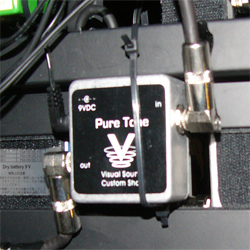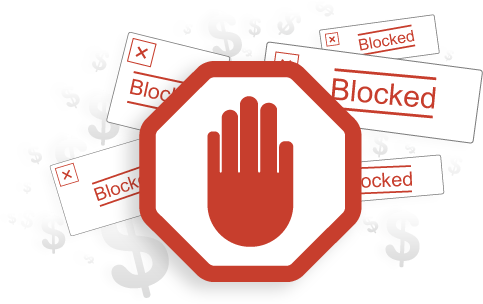Maximize your guitar sound
 I’ve heard people talking quite a lot about buffer pedal, but I didn’t pay attention about it until recently. I have to admit that up to my recent shopping rage, I didn’t have that much pedal. For years, I was playing my guitar straight into the amp. I was also using multi-effects boxes instead of stompboxes. I finally discovered that best multi-effects cannot compete with regular pedals. It’s impossible to have the same quality in a box that regroups tons of different effects compared to a pedal doing only one thing. But this is another story.
I’ve heard people talking quite a lot about buffer pedal, but I didn’t pay attention about it until recently. I have to admit that up to my recent shopping rage, I didn’t have that much pedal. For years, I was playing my guitar straight into the amp. I was also using multi-effects boxes instead of stompboxes. I finally discovered that best multi-effects cannot compete with regular pedals. It’s impossible to have the same quality in a box that regroups tons of different effects compared to a pedal doing only one thing. But this is another story.
I was quite happy with my sound, and I thought everything was cool that way. But after reading a lot about what a buffer can do to your sound, I decided to give it a try. So I ordered the Pure Sound pedal from Visual Sound.
Technically speaking, a buffer takes the high impedance signal of your guitar and changes it to a low impedance signal. It also adds an inaudible amount of additional gain to your signal. This process allows your guitar sound to pass through all of your pedals without your signal being compromised.
Clearly, it nullifies volume and tonality dropping caused by your pedals.
A buffer can also reduce radio frequency noise that can happen in certain places. No more police or taxi CB or cheap a.m. radio during a concert or recording session.
Using a buffer is especially recommended if you use a lot of true bypass pedals. true bypass pedals do not change your sound when the effect is off. This is the good side of true bypass stompboxes. You can have as many pedals as you want without your original EQ being altered when pedals are off. This is good in theory, because all those pedals will suck tone and volume out of your circuit, true bypass or not. It’s a proven fact that the sound is altered when the Jack is longer than 18 feet. The signal is losing volume and frequency. Especially in the high register.
You can, of course, modify your setting by boosting high frequencies on your amp to get as close as possible to your original setting. But it doesn’t work that way; your sound is still going to be muffled and you are going to add ground noise.
Even if 18 feet seams huge, The total lenght of your signal can easily be much longer. Just count the lengh of your jack from the guitar to the first pedal. Plus all the small jacks in between pedals, and finally from the last pedal to you amp. There are big chances the full lengh of your signal overcomes 18 feet by far. Of course you are highly encouraged to use the shortest jack possible, but on stage, your main jack can easily be 10 feet and over, and if you don’t want to be jammed into your amp, you probably need 15 feet and up from the pedalboard to the amp. Even if you only have one pedal, you already need a buffer…
A traditional pedal continues to boost your sound even when the effect is off. The bad side of it is that your original tone is altered, but the effect is still boosting the signal. It can counterbalance the loss created by the length of your circuit.
The best solution, is to use a buffer. No more question. You can have as many pedals as you want, true bypass or not, with an extra long Jack or not. Whatever gear you decide to use, your signal is going to be perfect without having to worry about any tone loss on your system.
To get the best at your buffer, you must place it right after your guitar. Personally, I located it right after my passive volume pedal. This pedal is the type of effect that you just plug and forget. So I stashed it under the pedalboard along with power supplies, in order to gain room. Since, I never played without it. Using a buffer is going to make your guitar or bass sounds exactly like if you are plugged straight into your amp with a short cable, no matter how many pedals you use or how long your Jack is.
My sound is now amazing. I remember how surprised I was when I installed it. The sound had much more frequencies right away. Using a buffer, all my effects are much more powerful and I get better results without having to set every stompbox to the max.
More flexibility and possibilities
Get Pure Tone by Visual Sound
Check out the link below
- Visual Sound CSPT Pure Tone Buffer
@ Amazon
[adrotate group=”9″]
Picture & Video: Hervé Senni
Pure Tone by Visual Sound – The Reason You Should Use a Buffer
This post is also available in: French


